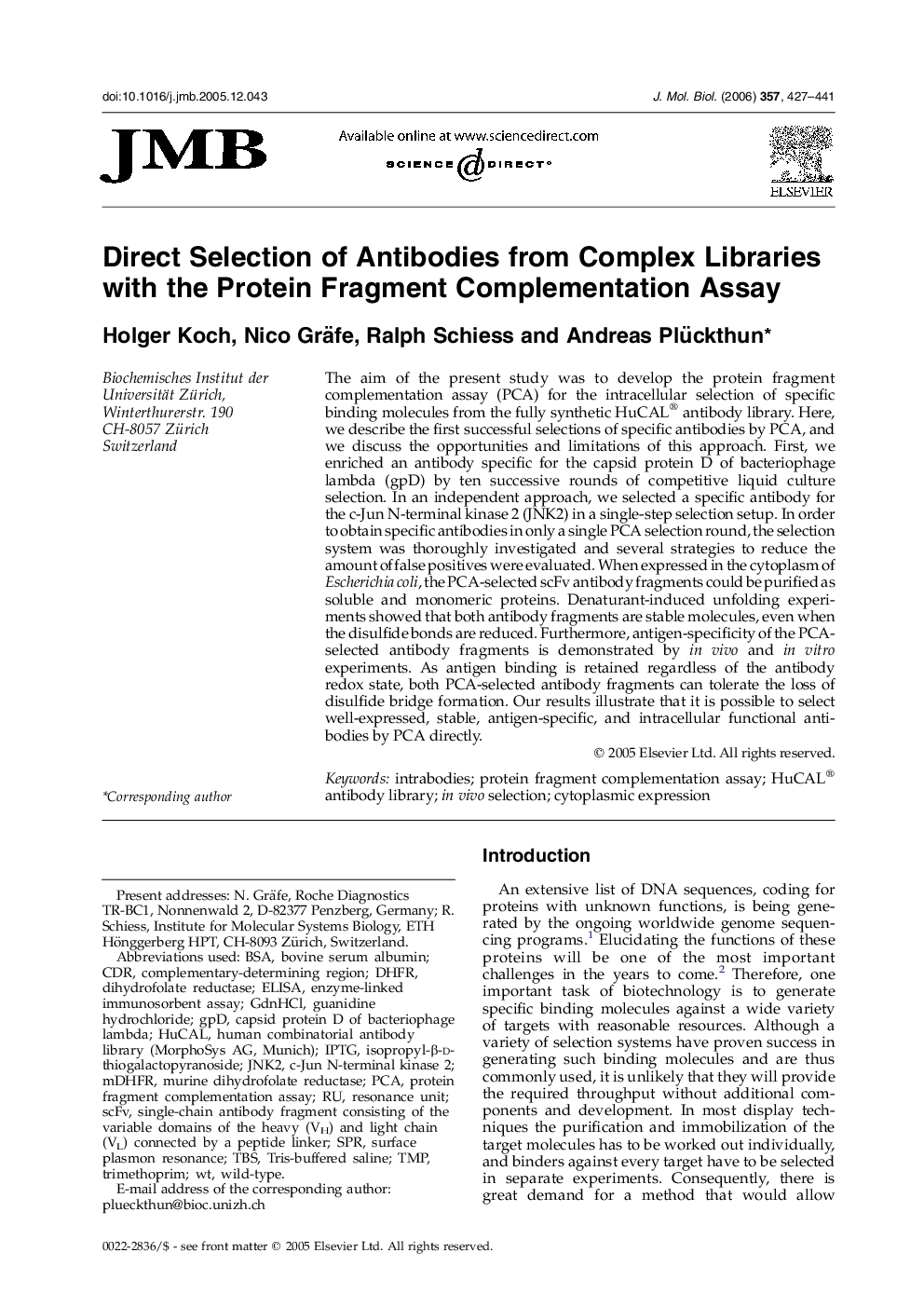| کد مقاله | کد نشریه | سال انتشار | مقاله انگلیسی | نسخه تمام متن |
|---|---|---|---|---|
| 2189827 | 1096224 | 2006 | 15 صفحه PDF | دانلود رایگان |

The aim of the present study was to develop the protein fragment complementation assay (PCA) for the intracellular selection of specific binding molecules from the fully synthetic HuCAL® antibody library. Here, we describe the first successful selections of specific antibodies by PCA, and we discuss the opportunities and limitations of this approach. First, we enriched an antibody specific for the capsid protein D of bacteriophage lambda (gpD) by ten successive rounds of competitive liquid culture selection. In an independent approach, we selected a specific antibody for the c-Jun N-terminal kinase 2 (JNK2) in a single-step selection setup. In order to obtain specific antibodies in only a single PCA selection round, the selection system was thoroughly investigated and several strategies to reduce the amount of false positives were evaluated. When expressed in the cytoplasm of Escherichia coli, the PCA-selected scFv antibody fragments could be purified as soluble and monomeric proteins. Denaturant-induced unfolding experiments showed that both antibody fragments are stable molecules, even when the disulfide bonds are reduced. Furthermore, antigen-specificity of the PCA-selected antibody fragments is demonstrated by in vivo and in vitro experiments. As antigen binding is retained regardless of the antibody redox state, both PCA-selected antibody fragments can tolerate the loss of disulfide bridge formation. Our results illustrate that it is possible to select well-expressed, stable, antigen-specific, and intracellular functional antibodies by PCA directly.
Journal: Journal of Molecular Biology - Volume 357, Issue 2, 24 March 2006, Pages 427–441